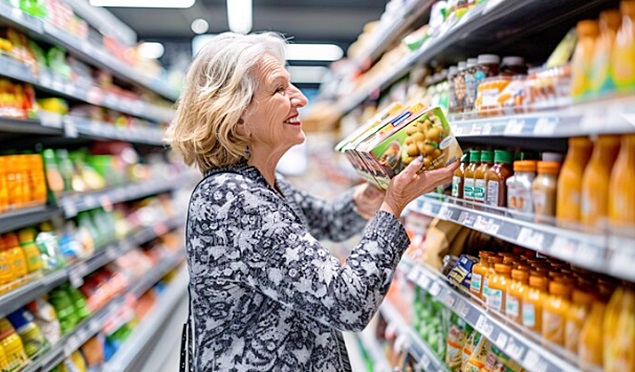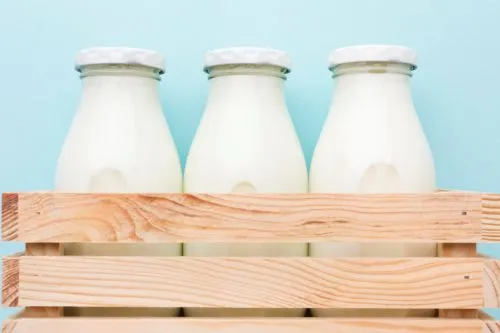
Is the Era of Big Brands Over? The Rise of Private Labels Worldwide
As half of global shoppers now choose supermarket private labels, a study cited by ConfectioneryNews raises the question: is the golden age of branded food and drink coming to an end?
From Underdog to Power Player
Once seen as the poor relation of glossy, well-marketed food and beverage brands, private labels have undergone a major transformation—and are now reaping the benefits.
“The global private label market is thriving,” says a spokesperson for market research firm NIQ.
In fact, a new NIQ report reveals that 50% of consumers worldwide are buying more private-label products than ever before. In several countries, this trend is even stronger: Germany (61%), Spain (58%), India (56%), France (54%), and Italy (53%) are all above the global average.
“We’re seeing consumers across markets embracing store brands with renewed respect,” NIQ notes.
Markets to Watch
Other markets are slightly below the global average but are rapidly catching up—and are expected to surpass it in the coming years. These include the United States (48%), Canada (48%), and the United Kingdom (46%).
Younger generations, in particular, are driving this shift. Twice as many Millennials (46%) and Gen Z respondents (46%) said they are willing to spend more on private-label products compared to only 23% of Baby Boomers, according to NIQ’s Mid-Year Consumer Outlook Survey.
“Millennials and Gen Z are set to wield incredible purchasing power in the years ahead,” the NIQ spokesperson added. “And they are already building preferences and brand loyalty.”
What’s Fueling Private Label Growth?
The number one factor across all markets? Price. As the cost-of-living crisis continues to squeeze household budgets, consumers are turning to more affordable options.
“Consumers are feeling the pressure,” says Michael Della Penna, Chief Strategy Officer at InMarket. As a result, brand loyalty is often traded for value—particularly in categories like chips, snacks, breakfast cereals, biscuits, candy, and bread, where perceived differentiation is low.
But the list of private-label categories is growing, especially as supermarkets expand their own-brand offerings.
More Than Just Price—Quality Counts
Private labels are no longer just the budget-friendly option—they’re increasingly winning over customers with quality.
“Over the years, the quality of private-label products has improved significantly, leading to a positive shift in consumer perception,” says Katya Witham, Associate Director at Mintel Food & Drink.
In fact, Witham adds, many consumers now see private-label products as comparable—or even superior—to national brands in terms of quality.
Enter the Premium Private Label
The growth of premium private-label lines—such as Tesco Finest, Sainsbury’s Taste the Difference, and Carrefour’s Reflet de France—has elevated the status and appeal of store-brand products.
Luxury supermarkets like Waitrose and Marks & Spencer in the UK, La Grande Epicerie de Paris in France, and Eataly in Italy have long been known for offering top-tier food and beverage products under their own labels.
Marks & Spencer, in particular, is considered a go-to for indulgent ready meals, snacks, desserts, and confectionery. Its seasonal collections—like decadent Easter eggs and elaborate Christmas biscuits and cakes—often sell out, with shoppers going from store to store to track them down.
M&S treats have also gone viral on social media—if you haven’t heard of the Big Daddy Pistachio Bar, chances are you’re not spending much time on TikTok or Instagram. Congratulations!
The End of Big Brands?
The rise of private labels might worry established brands—but it’s far from their downfall.
“Brand loyalty remains strong across most categories, even as spending on private labels increases,” says Della Penna.
What may change is how people shop for branded products. Della Penna anticipates a shift toward bulk purchasing, allowing consumers to get their favorite brands at reduced prices through volume discounts.
With global population growth driving consumer demand ever higher, there’s still room for everyone. Brands simply need to learn to compete in a space they once dominated almost entirely.
How Can Big Brands Compete?
“Now is the time for name brands to embrace innovation as a path to success,” says Della Penna.
Rather than viewing private-label growth as a threat, brands should see it as an opportunity to refresh their marketing strategies and reinforce their value.
To justify their higher prices, brands should highlight what sets them apart—be it superior quality, health and wellness benefits, or unique flavors. Discount vouchers can also be a useful tool to sway consumer choices.
Now is the time for national brands to act if they want to win the battle for consumer loyalty. Private labels are putting in the work—and it’s clearly paying off. (Photo: Freepik)




